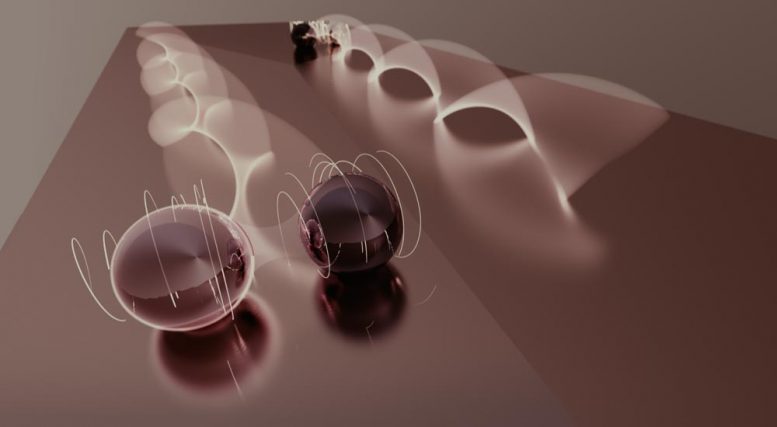
A team of researchers at the University of Illinois in collaboration with researchers from the National Institute of Standards and Technology (NIST), the University of Maryland, Boston College, and ETH Zurich, have used high-resolution microscopy tools to peer at the inner-workings of an unusual type of superconductor, uranium ditelluride (UTe2). Their measurements reveal strong evidence that this material may be a natural home to an exotic quasiparticle that’s been hiding from physicists for decades, the (un)famous Majorana particle.
The particles in question were theorized back in 1937 by an Italian physicist named Ettore Majorana, and since then, physicists have been trying to prove that they can exist. Scientists think a particular class of materials called chiral unconventional superconductors may naturally host Majoranas. UTe2 may have all of the right properties to spawn these elusive quasiparticles.
Inside of a normal superconductor, the electrons pair up in a way that enables the lossless, persistent currents. This is in contrast to a normal conductor, like copper wire, which heats up as current passes through it. For this conventional kind of superconductivity, magnetic fields are the enemy and break up the pairs, returning the material back to normal. Over the last year, researchers showed that uranium ditelluride behaves differently.
The team used a high-resolution microscope called a scanning tunneling microscope to look for evidence of the unusual electron pairing and Majorana particles. This microscope can not only map out the surface of uranium ditelluride down to the level of atoms but also probe what’s happening with the electrons. The material itself is silvery with steps jutting up from the surface. These step features are where evidence for Majorana quasiparticles is best seen. They provide a clean edge that, if predictions are correct, should show signatures of a continuous current that moves in one direction, even without the application of a voltage. The team scanned opposite sides of the step and saw a signal with a peak. But the peak was different, depending on which side of the step was scanned.
The next step is to make measurements that would confirm that the material has broken time-reversal symmetry. This means that the particles should move differently if the arrow of time were theoretically reversed. Such a study would provide additional evidence for the chiral nature of UTe2.
If confirmed, uranium ditelluride would be the only material, other than superfluid He-3, proven to be a chiral unconventional superconductor.
The study has been published in Nature. (SciTechDaily)
